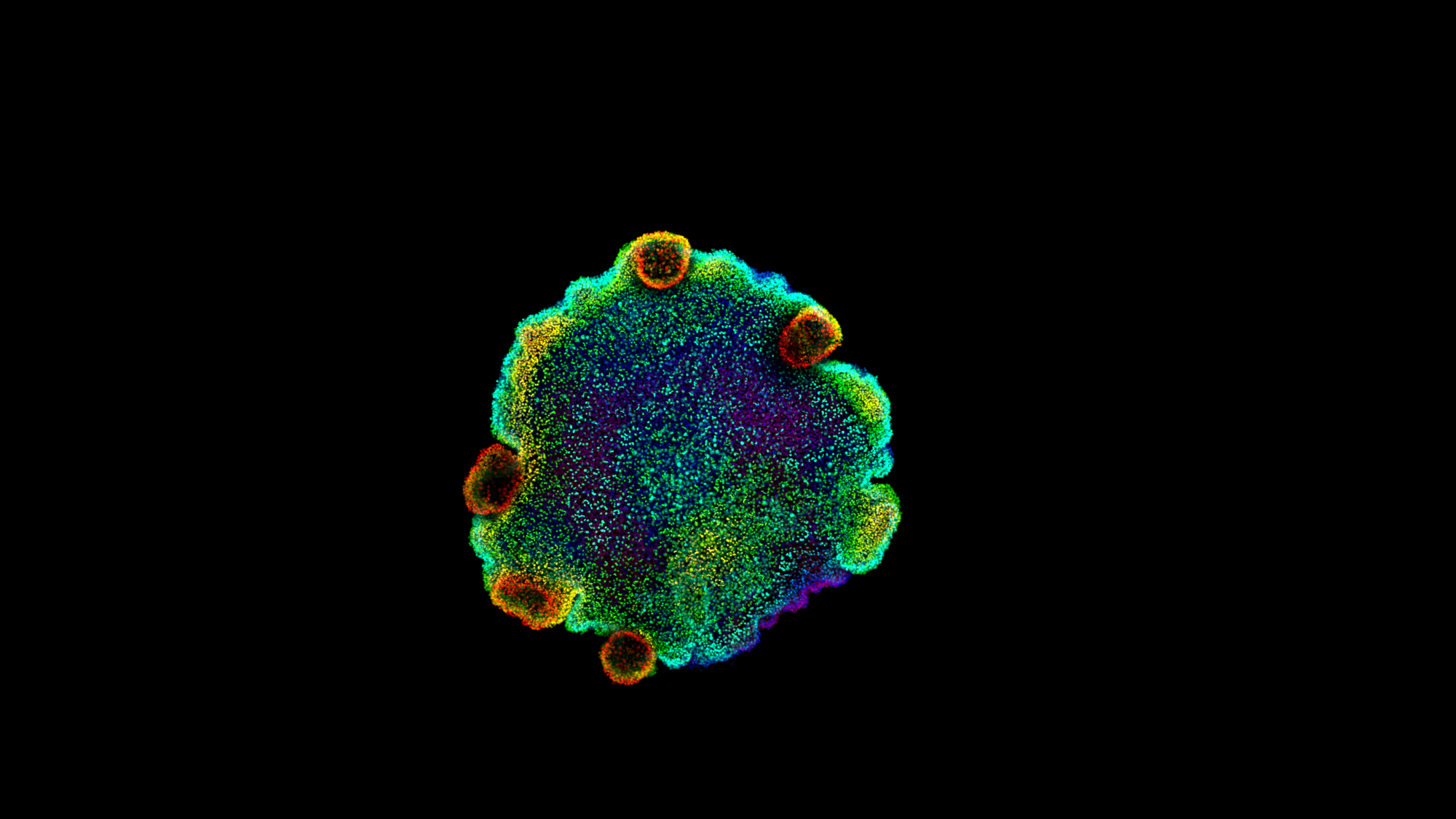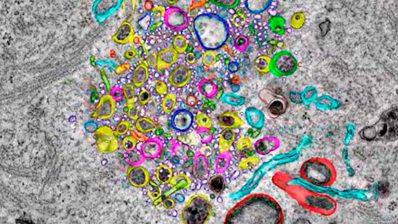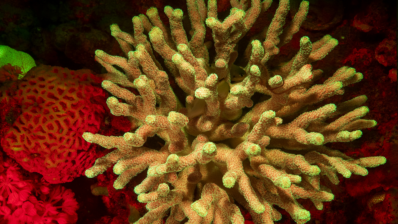This confocal microscopy image, by Sebastian R. Najle, belongs to a tiny sea creature, Trichoplax sp. H2, which has been the protagonist of a recent study by researchers at the Centre for Genomic Regulation (CRG) led by Arnau Sebe-Pedrós.
The study sheds light on the evolution of neurons by focusing on placozoans, tiny marine animals around the size of a large grain of sand that lack body parts or organs and are thought to have first appeared on Earth around 800 million years ago.
The researchers created a map of different placozoan cell types across four species (Trichoplax sp. H2 amongst them) and found that placozoans coordinate their behavior using peptidergic cells, which release small peptides that direct the animal’s movement and feeding.
The research also showed that the development of peptidergic cells in placozoans resembled neurogenesis, the process by which new neurons are formed in more advanced animals.
The study suggests an evolutionary connection between peptidergic cells in placozoans and neurons
From these and other similarities, the study suggests an evolutionary connection between peptidergic cells and neurons, although the authors emphasize the importance of further research and genome sequencing in diverse species to uncover more about the origins and evolution of neurons and other cell types.
The work was done in collaboration with Luis Serrano’s lab (CRG), the Schierwater lab (Hannover Universtiy) and the Gruber-Vodicka lab (Kiel University), and with the support of the Proteomics Unit and the Advanced Light Microscopy Unit at the CRG.
Stepwise emergence of the neuronal gene expression program in early animal evolution. Cell, Volume 186, Issue 21, P4676-4693.E29, OCTOBER 12, 2023. https://doi.org/10.1016/j.cell.2023.08.027






